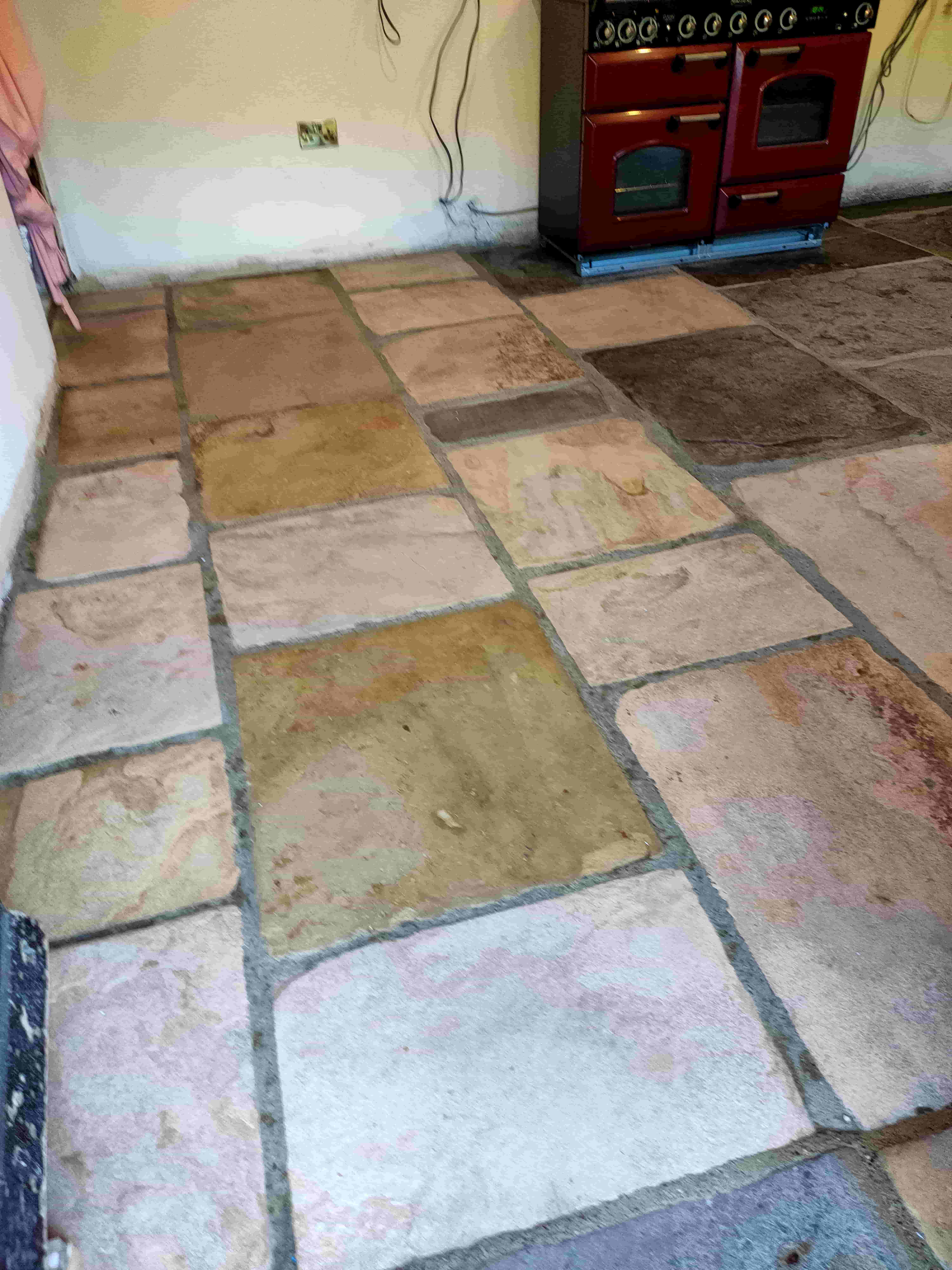This customer was completely refurbishing a 16th Century Manor House just outside Harrogate in the Yorkshire Dales and had just started renovating the downstairs after completing the upstairs. The kitchen and entrance hall had an original Yorkshire stone floor that had come from local quarry. The floor had been covered up with lino and carpet until it was discovered as part of the renovations.

The manor was a listed building and so the new owner wanted to preserve as much of the original features as possible including the floor which must have been as old as the building. Tile Doctor has been involved in numerous historical restorations previously and so we were called in to renovate the stone flooring and bring it back to life. Given the potential age of the floor and its historical significance I realised a sympathetic and careful approach would be needed but was more than happy to get involved.

Deep Cleaning a Yorkshire Stone Floor
To deep clean the stone flags a strong dilution of Tile Doctor Pro-Clean was sprayed onto the floor and left to soak in for ten to fifteen minutes. This product is a concentrated alkaline tile and grout cleaner that is powerful enough to strip off coatings and is ideal for deep cleaning natural stone. We used this in combination with a floor buffing machine fitted with gritted brushes to remove multiple layers of ground in grease and dirt and to remove sealers. The floor was then rinsed with water and vacuumed with a wet pick-up vacuum to remove the soiling.
Afterwards the floor was inspected and I could see more work would be needed to get the floor completely clean. As a result, the process was repeated but this time with a stronger product called Tile Doctor Remove and Go which is good at removing stubborn stains, adhesives and draws out ingrained grease and sealers.
The final step of the cleaning process was to apply Tile Doctor Grout Clean Up which is an acid cleaner that will remove old cement smears, alkaline salts whilst neutralising the ph level of the stone after the use of strong alkaline cleaning products earlier.
By the end of the first day the floor was looking so much cleaner. The next step would be to seal the stone, but it would need to dry out before I could do that. So, after the final rinse the whole floor was dried as much as possible using a wet vacuum and left to dry off fully naturally.
Sealing a Yorkstone Tiled Kitchen Floor
I returned to seal the stone floor and started by checking it had dried with the help of a damp meter. I know from experience that applying sealer to damp stone is a bad idea as it will affect the way the sealer cures and can affect the overall finish.
The moisture readings were fine so before sealing the whole floor I discussed the finish the customer was looking for. Their preference was for a natural looking finish that showed the beauty of the stone yet improved the different colours. There are several different sealers in the Tile Doctor range and after applying a couple of samples Tile Doctor Seal & Go Extra was chosen. This product ticked all the boxes in that it would bring out the natural colouring in the stone and give a very slight smooth finish, at the same time as protecting the floor and making it easy to maintain. Additionally, this sealer is breathable with is an important consideration when sealing old stone floors which don’t have the benefit of a damp proof membrane under the floor.

The deep cleaning process and fresh natural sealer transformed the stone floor bringing out its original beauty. The customer was delighted with the floor and the way in which the colours came out and left the following glowing feedback for us.
For ongoing maintenance cleaning of the floor I left the customer with a bottle of Tile Doctor Neutral Cleaner to use, this product will clean the floor but is mild enough not to impact the sealer which can be a problem with the harsher cleaning products you tend to find in supermarkets.


When cleaning floor tiles with a mop we recommend using two buckets, one containing a neutral pH cleaning fluid such as Tile Doctor Neutral Tile Cleaner or Stone Soap and the second where you rinse your mop afterwards, otherwise you will contaminate your cleaning fluid with dirt every time you rinse.